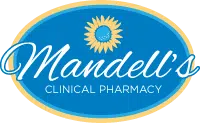Converting Units
Ensuring you’re administering the right amount of medication on your fertility journey may involve converting cubic centimeters to milliliters or CCs to mLs. While it may seem complicated at first, you don’t have to have “MD” or “PharmD” after your name to understand these subsets of the metric system, which scientists and healthcare professionals use worldwide.
Let’s break down this easy conversion so you understand how to navigate between both.
The Basics of CC to mL
Syringes for your oral liquid medications may arrive labeled with milliliter (mL) or cubic centimeter (CC). These different names might have you convinced that you’ll need different amounts of medication. That’s actually incorrect!
They are just different names for the same volume. One milliliter equals exactly one cubic centimeter.
The application usually dictates which measurement is standard. Hospitals, for example, might choose to use milliliters because it’s easier to convert from liquid to weight measurements.
Simply put, 1cc=1ml, 2cc=2ml, 3cc = 3ml, etc.
How to Convert CC to mL
Now that you know they’re the same, it’s easy to convert mLs to CCs and vice versa. If an HCG injection to trigger ovulation requires two milliliters and your syringe uses cubic centimeters, you should draw two cubic centimeters of medication.
Now, measuring the amounts correctly in your syringe can get a little tricky. Here’s how to accurately measure medications in common syringe sizes:

- 0.5 mL syringe: also called a 0.5 CC syringe, this syringe has small black marks that each equal 0.01 mL. Simply draw medication up one unit for each one-hundredth of a milliliter.

- 1.0 mL syringe: this syringe has small black marks for each 0.01 mL (or 0.01 CC) and larger black marks for every 0.05 mL. Numbers note every 0.1 mL. For example, if you are asked to draw up 0.8ml on this syringe, you would draw medication up to the “80” on the syringe. If you were asked to draw up 0.75ml, you would draw up to the line in-between the 70 to 80, the “75” mark on the syringe.

- 3 mL syringe: use this size for larger medication amounts. The small black marks equal 0.1 mL and the large black marks with a number note every 0.5 mL.
Tips for Measuring Medication Correctly
Taking the wrong dose is a common issue with prescription liquid medications. Make sure you listen closely to dosing instructions and read the volume on the label carefully. Always use the included syringe or dosing device, and bring any questions to your pharmacist if you need to convert CCs to mLs.
Mandell’s Clinical Pharmacy partners with you to understand your new and existing prescriptions. Whatever your question or concern, we’re here to support you on your fertility journey. Get in touch with us to learn how our staff at Mandell’s Clinical Pharmacy can become your fertility medication specialists!
